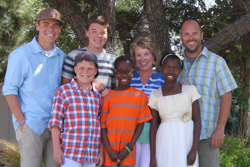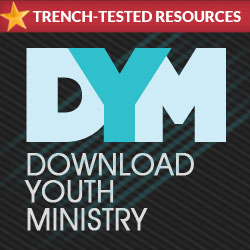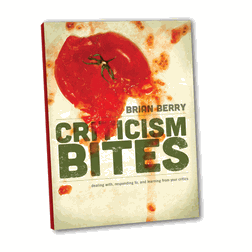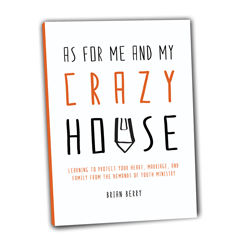Last March I taught a seminar that I had taught once before. I made some changes to it from the first time, but it this go around was called, “Moving from Leadership to Ownership: creating a student owned ministry”. It wasn’t about student leadership per se, but rather was about some shifts that I think we need to make if we’re going to move from ministry to students to ministry owned by students that will withstand the test of time.
You can give the entire seminar a listen by buying it or on cd or download here if you want. (btw, I get nothing financial if you do that, so no push from me really).
Anyway, in that seminar, one of the things I mentioned was that I think the proclamation model of teaching is dying among students and I questioned its ability to produce life-long followers of Jesus by itself. Simply put, preaching alone is not gonna cut it. I suggested that we that we need to move to a more interactive teaching format that engages students in the thinking process. That prompted a recent e-mail to me that read as follows. Since I didn’t ask for permission, I’ll post it here anonymously:
I was one of the student pastors at your workshop at SYMC on moving from leadership to ownership. BTW I really enjoyed the session. I remembered you talking about using the Lady Gaga song “Born this Way” during a teaching time with your students and turning it into a discussion amongst the group. I want to use that as well as a few clips from last weeks Glee episode in a discussion message in the next week or so. What does that look like when you do it? I am great at monologuing and preaching when I am the only one talking, but I am not sure what questions to ask or how to lead a discussion message in this context. I think it would be such a great thing to help our students understand the good and the bad of the song. Any help? Thanks bro
_____________________________________
Without taking the time to clarify what I said or what this youth pastor is asking about, here’s my response as to how I think we can help students engage a discussion in a learning environment. I posted it her ein the hopes that maybe you’ll find it helpful too.
_____________________________________
thanks for the kind words. Glad you enjoyed the seminar.
If your normal gathering is like mine where it’s easy to do the monologue/ proclamation style of learning… then I have found that there are at least 4 things that are needed for good discussions in these environments. These are not yoda conclusions but rather observations in process. They are also not a full treatment of teaching to teens, but rather some simple ideas to help engage an audience of teens in feedback. Ok.. all that said, here they are:
- PREPARE YOUR ADULTS: you need adults or key students spread around the room to get conversations going in smaller groups. they need to know this is coming and to be ready to help when it does.
- PROVIDE AN ENGAGING TOPIC or ILLUSTRATION: you need a topic that is engaging on various opinion levels but that is still safe to talk about. Hence Lady Gaga or Osama Bin Laden or Glee or whatever. Then get students talking about “most teens” or “their peers” instead of themselves. Most students will actually share stories they relate to, but in the 3rd person
- CREATE SAFE INTERACTION POINTS. Ask open ended questions (ones that don’t have yes or no as an answer) You can collect feedback verbally by writing down responses up front on a whiteboard- affirming the contributions as they come. You can give students a chance to speak silently by writing something down on sticky notes and such and then pasting them somewhere and you read them. You can use texting or other methods too. You can see a sample of how I recently did this here.
- DEVELOP A TEACHING/INTERACTION RHYTHM. ie: teach some. read some. show a video. then gather responses. then repeat. give lots of chances for them to talk in brief, short, safe segments. Warm them up to the idea that they can ask a question or interrupt you or speak up when you give the go ahead.

 Husband. Dad to 5. Student Ministry Pastor. Follower of Jesus. Yatta yatta.
Husband. Dad to 5. Student Ministry Pastor. Follower of Jesus. Yatta yatta.



Recent Comments